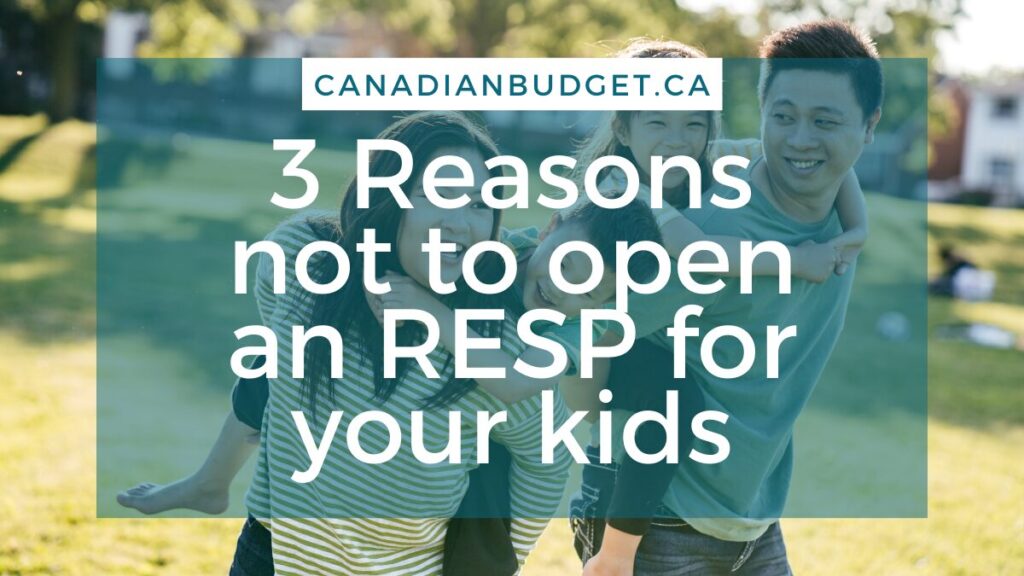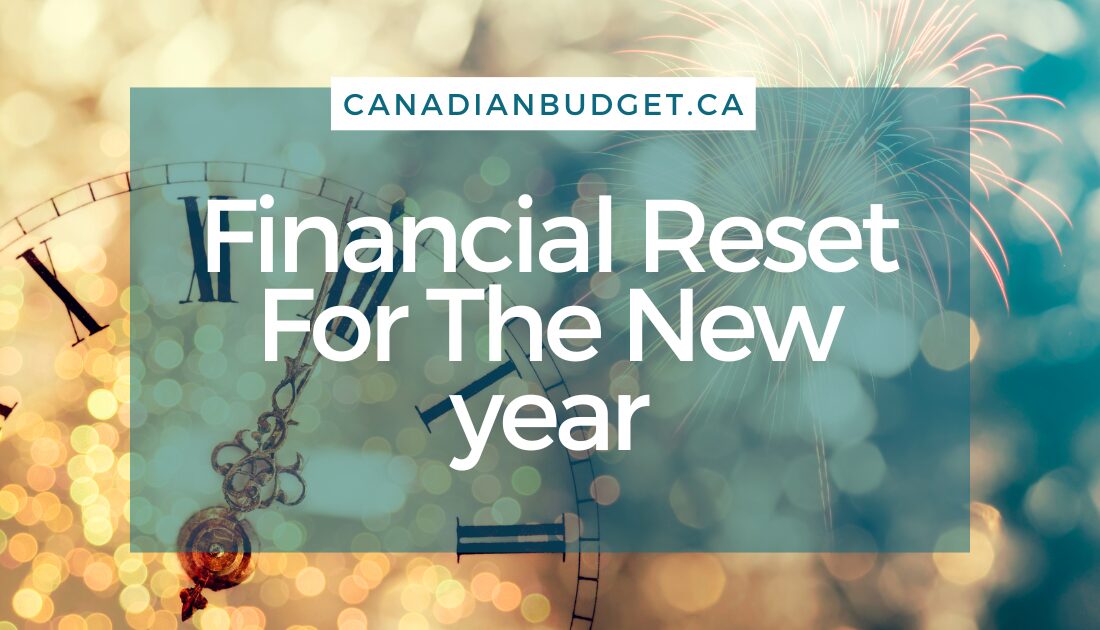Many millennial parents are struggling with student loan debt repayments, higher than planned mortgage payments, or increasing rents, as well as being sandwiched, potentially having to support or care for elderly parents at the same time as their kids.
Still, giving their child a debt-free education ranks near the top of the wish list for most parents! So, they open an RESP (Registered Education Savings Plan) and start investing for their kids!
But there are a few reasons parents should NOT open an RESP for their kids; we will discuss why prioritizing children’s education over parents’ retirement can be harmful.
What is an RESP
Table of Contents
ToggleAn RESP is a tax-advantaged savings/investment account Canadians can use to save money for their child’s post-secondary education. You can open an RESP once your baby has a SIN Number. Parents, family, and friends can contribute to the account, the money is tax-deferred until withdrawn for educational purposes – then taxed as the student’s income.
The government also matches some contributions with the Canadian Education Savings Grant (CESG), providing a 20% match on the first $2,500 of annual RESP contributions, with a maximum grant of $500 annually.
Low-income families may also qualify for the Canada Learning Bond (CLB). The CLB provides an initial $500 grant to eligible children’s RESP accounts. Afterward, it offers an additional $100 annually for up to 15 years. Families do not need to contribute their own money to receive the CLB.
The RESP account has a lifetime maximum contribution of $50,000, but your investments can grow above that level. This account is another prime example of why you should invest in the RESP instead of saving – a mistake many people also make about the TFSA account.
Unused contributions (for instance, costs incurred were less than what was in the account, or the child did not attend post-secondary education) could be transferred to a sibling’s RESP or into the Parent’s RRSP.
3 Reasons Not to Open An RESP And Start Investing For Your Kids
Any parent wants to give their kids everything they didn’t have and teach them everything they didn’t learn. However, for three reasons, prioritizing their children’s education savings by opening and investing in an RESP can be detrimental in certain circumstances.
Parents are financially struggling.
Not every family can afford to invest for their children on top of their bills and living expenses. Stagnant wages, high cost of living, high levels of household debt and exorbitant costs of groceries all contribute to why some families might not have any extra room in their budget to open an RESP and start contributing. Building up a strong emergency fund and paying off high-interest debts should be a priority alongside investing for retirement.
Making ends meet without landing (further) into debt should be priority number one. Making a little wiggle room in your day-to-day budget can go a long way toward building a fully funded emergency fund and being in a position where you are financially stable and able to start investing.
Parents have underfunded retirement savings.
When parents prioritize opening an RESP and investing for their children over investing for their retirement, they risk putting themselves and their children in a difficult financial situation. Underfunded retirement savings could mean pushing back retirement plans for years to continue working to save more.
It also means you may have to depend on your children financially in retirement. Becoming a financial burden to your children is the last thing any parent wants to do, especially when they worked so hard to give their kids a leg up on their education costs.
If this is your situation, opening an RESP and prioritizing contributing to it will put you into more financial hardship. A survey from H&R Block noted that “52% [of Canadians] don’t feel they have enough money left at the end of the month to save for their retirement.” So, if Canadians can’t save for retirement, it will further hinder them by prioritizing their kids’ education.
Parents are pressured by Group RESP salespeople to start an RESP.
Parents are under immense guilt and pressure to provide the best for their kids. That includes investing for their kid’s education as early as possible. Unfortunately, some organizations take advantage of that desire and guilt.
Parents-to-be sign up for many freebies and contests when they are expecting. The contests might offer win diapers for life, cash prizes, free photo shoots, you name it. Oftentimes, these contests are sponsored by Group RESP or scholarship trust providers to get the names and phone numbers of expectant parents so they can pitch their product to new parents once the baby arrives.
Salespeople often reach out at a time when parents are sleep-deprived, overwhelmed, feeling immense guilt and worry they aren’t doing things right. This makes an ideal sales call for a Group RESP salesperson who plays on that guilt to get parents to join their Group RESP program.
Please avoid Group RESP’s at all costs. You can manage your own RESP via DIY investing, or if you feel you don’t know enough to manage it yourself, open an RESP through a robo-advisor for a more hands-off approach.
Either way, when you start an RESP, you maintain control, you make the contribution schedule, you don’t get penalized for missing contributions, and you can choose to pause your contributions if your budget can’t stretch to make a payment at any time.
How to invest for your children without sacrificing your budget or retirement savings
When your child has received their SIN Number, open an RESP with a robo advisor or DIY investment brokerage – Many brokerages will apply for the CESG and CLB (if eligible) for you, removing an extra step for you to do. Once you have opened the account, if you cannot afford to invest for them right now, don’t. This does not make you a bad parent.
- If you qualify for the CLB – You will get those grants from the government without having to contribute any money – but you must open an RESP to get them.
- When family and friends ask what gifts they should get for the baby, you can respectfully request a RESP contribution for their education fund.
- If your budget allows and you do not need the money to make ends meet, consider reinvesting the Canada Child Benefit amount you receive back into the RESP.
- If you have no consumer debt and are well on the way to a strongly funded retirement, simultaneously focus on investing for retirement and your child’s education.
Options to open an RESP
You can start an RESP directly with almost any brokerage for a self-directed account – this is where you are responsible for choosing the investments and managing the account.
If you are looking for a Robo Advisor RESP (one where you don’t need to know anything about investing to start), my top choice is Wealthsimple. When you start an RESP, they will manage everything for you, including applying for the CESG and CLB (if eligible). RESP accounts at Wealthsimple are only available through Managed Investing (their robo-advisor service), not through DIY accounts.
The fees from investing in an RESP at Wealthsimple fund the Wealthsimple Foundation, which helps modest and low-income families and students get government grants. They work in the community to provide programming and financial literacy education and help students fund their post-secondary education.
If you open an RESP at Wealthsimple with this link and contribute any amount, you will receive a $25 sign-up bonus.
Take advantage of time and resources.
Depending on how old you were when you had your kids, the timeline between now and retirement may be shorter than between now and your children’s post-secondary education. Having more time in the market is one of the great advantages of investing for children and why many people open an RESP right away.
However, the opposite means that with a shorter timeline to retirement, parents have less time to allow compound interest to do its magic, grow their accounts, and rebound their investment accounts if they incur losses.
As retirees – once you get to that point – there are no retirement loans available to help cover a shortfall in savings. If you have a home, your options may be a HELOC or reverse mortgage, but there are no retirement loans to help underfunded retirements.
You will likely need to keep working at least part-time well into your retirement age if you don’t focus on building up your nest egg early. If you have a workplace pension, you may have some additional income coming in retirement over those without one who only have government pensions (CPP/OAS/GIS) and their savings.
On the other hand, students have access to provincial and federal student loan programs and scholarship opportunities to help them pay for school. Therefore, priority should be given to retirement savings over education savings if there is only room in your budget for one contribution.
My wish for you is to get to a secure financial situation where your retirement funds are looking cushy, you have no debt aside from a mortgage, and you can easily fit that RESP contribution into your budget to help set your kids up for a debt-free education.
If that seems far away for you now, I hope you can utilize one of the above tips to invest without contributing yourself. And remember, you are a great parent!
Read more on the blog...
Do You Need an Accountant…
Guest Post by Karan Sachdeva of MultiTaxServices Doing taxes in Canada Money management often feels like one of those “I’ll deal with it later” topics, until tax season rolls around...
Read MoreWhy Wealthsimple Could Be the…
Wealthsimple Banking Review 2025: Best No-Fee Bank in Canada
Read MoreFinancial Reset For The New…
How to Do a Financial Reset for the New YearAs the new year begins, it's the perfect time to take stock of your financial health and set yourself up for...
Read MoreAbout The Author
Jessica Morgan
Jessica Morgan is the founder and CEO of Canadianbudget.ca. She is passionate about personal finance and helping Canadians improve their financial literacy by providing more Canadian focused financial content. A millennial mom of one, she has a burning obsession with all things personal finance.
Jessica has a BA in East Asian Studies from York University and a Masters in Business Administration from Toronto Metropolitan University. She is a career public sector employee with a Hybrid Pension, and an advocate for Canadian women to improve their personal finance knowledge.
Jessica Morgan
Jessica Morgan is the founder and CEO of Canadianbudget.ca. She is passionate about personal finance and helping Canadians improve their financial literacy by providing more Canadian focused financial content. A millennial mom of one, she has a burning obsession with all things personal finance.
Jessica has a BA in East Asian Studies from York University and a Masters in Business Administration from Toronto Metropolitan University. She is a career public sector employee with a Hybrid Pension, and an advocate for Canadian women to improve their personal finance knowledge.





